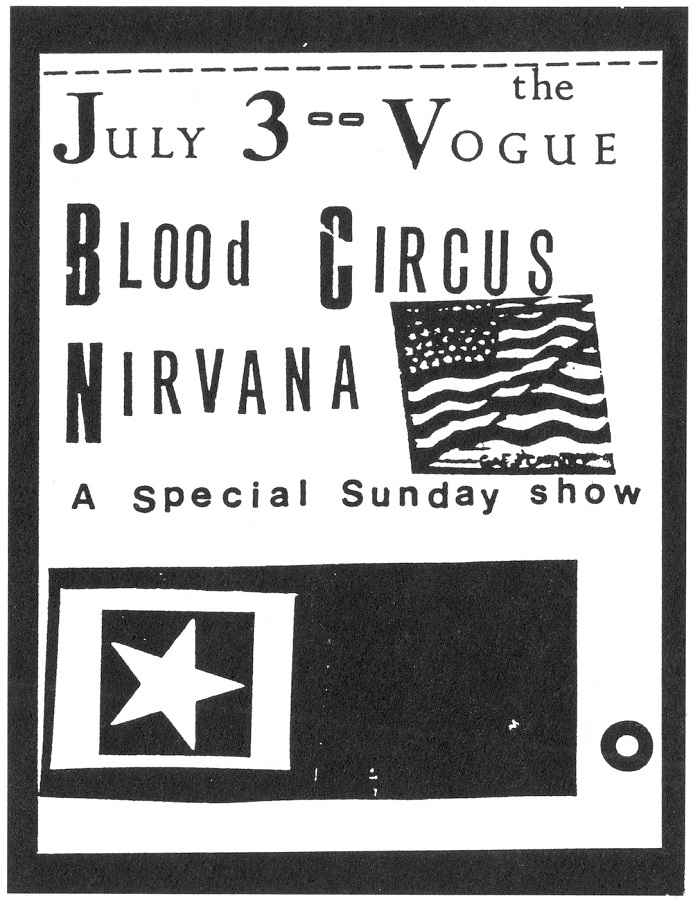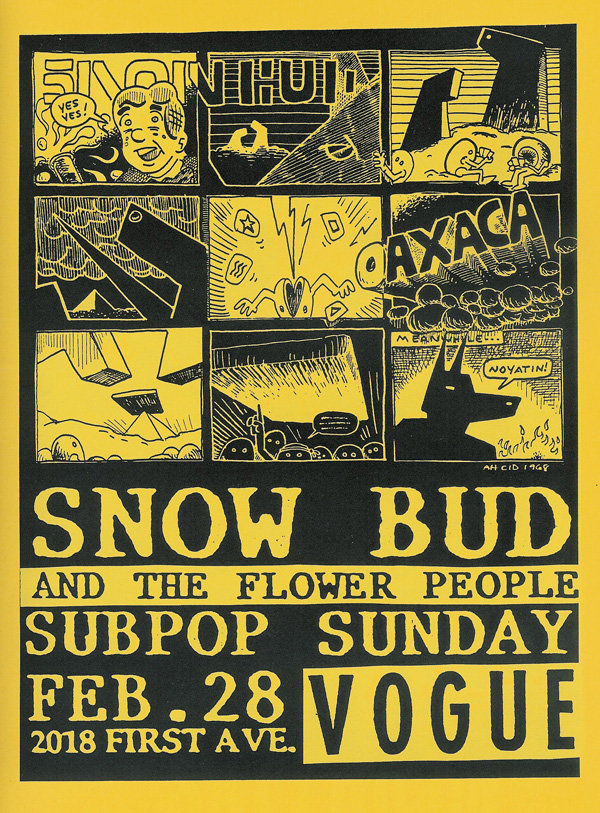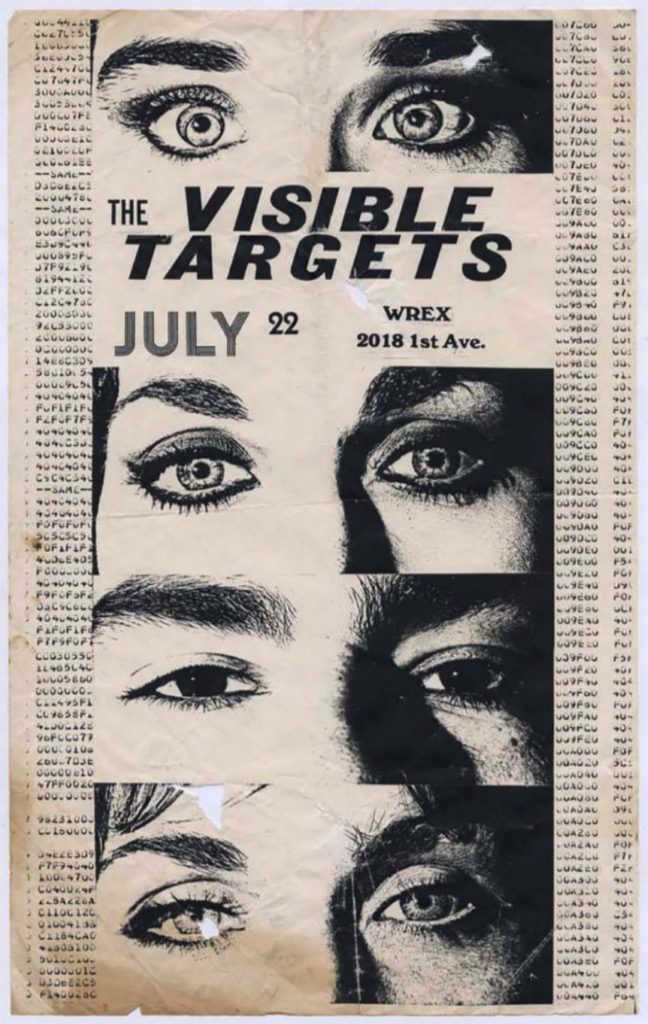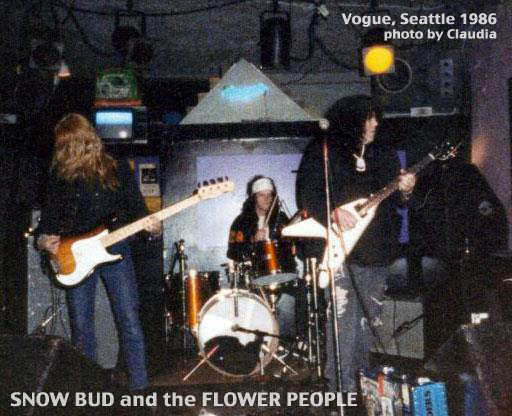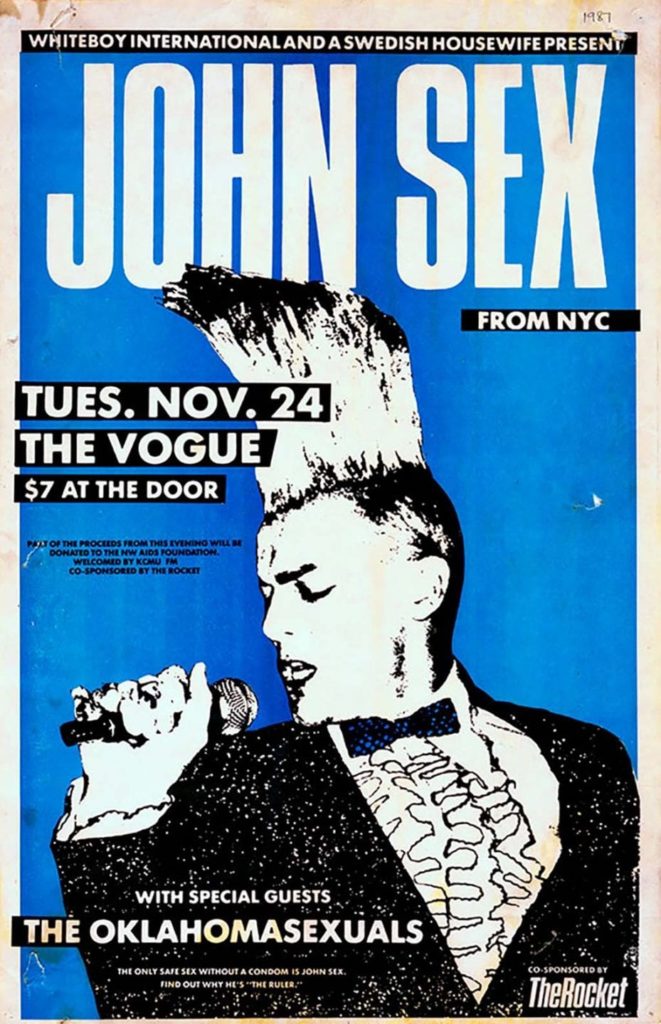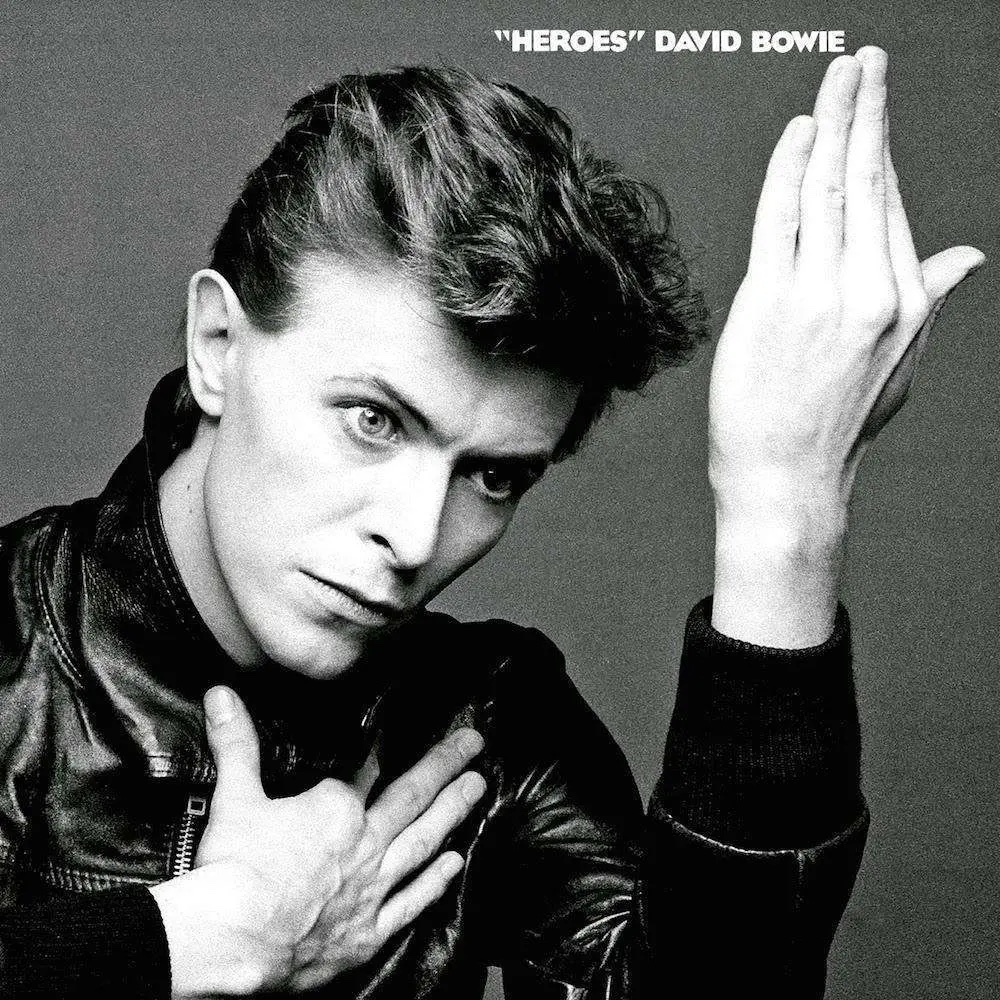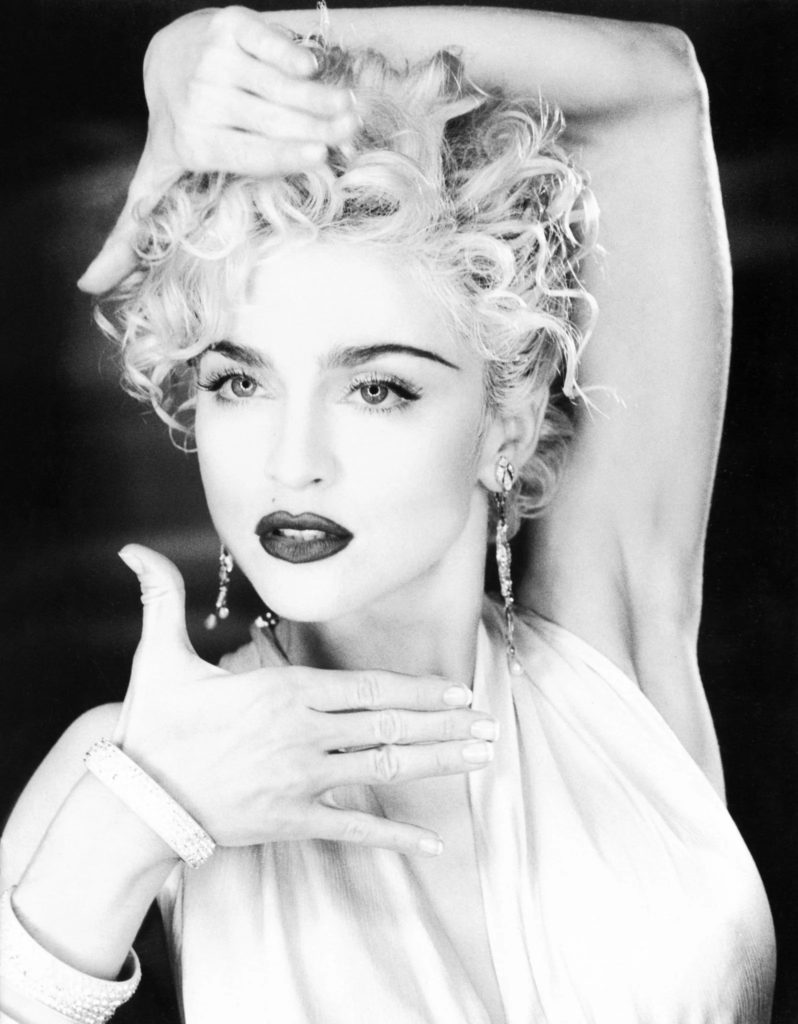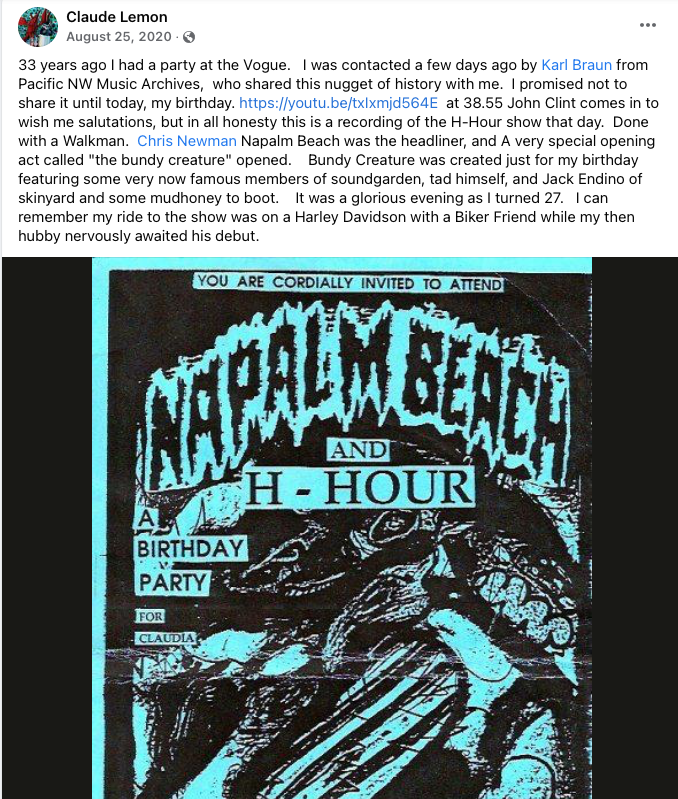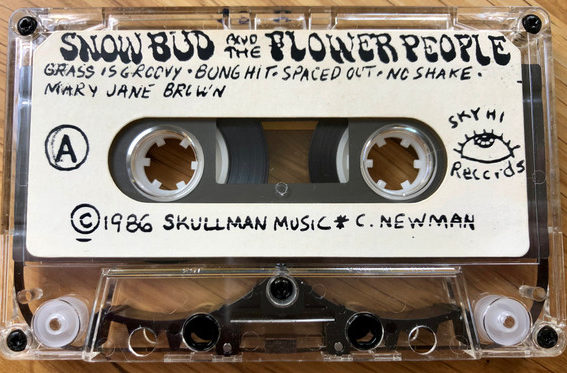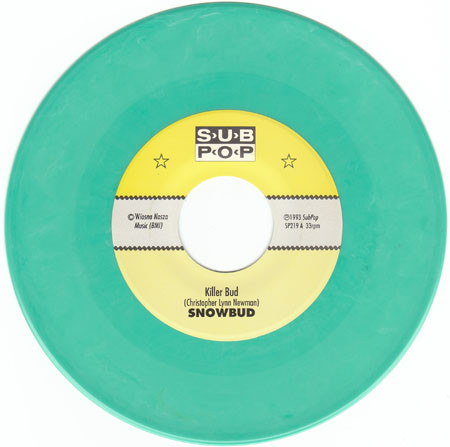And what else were they planning?
I have spent the last couple of days thinking hard about Chris’ story of meeting Bruce Pavitt and Mark Arm at the Vogue in 1986.
Chris’ memory about things like this was generally really good. There have only been a couple of times where I’ve figured out maybe his memory was off slightly about a gig. Not only does he remember events, but his memory for dates is incredible, considering how many hundreds of shows he’s played and how many albums he put out. But sometimes he’ll be off by a year or so.
Was he off by a year on his memory about playing the Vogue and meeting Bruce Pavitt?
And why does it matter? Do I need to explain why it matters?
The sloppiness (or alternatively, lying) I see around music reporting music history of the this place – the Pacific Northwest, and this era – 1980s-1990s – is astounding. In addition, writers are surprisingly (to me) resistant to correcting “mistakes” even when you can provide a refutation with back up. The reasoning for this varies from “how can you presume to know anything at all when you weren’t physically there”? (It’s called historical research using primary sources) to this idea that it’s just music and musicians and therefore facts don’t actually matter – something which seems both deeply disrespectful as well as disingenuous – if it’s “just” music why are some of these musicians living in mansions while others were living tents? At what point does one’s ability to earn money from one’s own work matter in this country? If you don’t care about art or music, maybe you care about money?
I don’t think I should have to explain why it matters.
Back to the origins of Snow Bud and the Flower People. Now I’ve heard this story several times, asked clarifying questions, etc. It sounds like Snow Bud actually originated during the winter of 1985-86, and that during that time period, the songs were recorded twice. The first session was Chris at home, alone. He picked out some funny sounding song titles, then picked out some drum drops, and using his reel-to-real 4 track, recorded some songs to go with the titles and drum drops. It’s not clear to me whether this first demo was ever distributed on cassette – maybe a little bit among friends. Then, probably in January 1986, Chris got together with his buddies and did a second version, with live drums, and that is what became the original Snow Bud and the Flower People cassette tape. The band was basically imaginary characters, but of course Chris was excited to play the songs live, so he then also put together a live act. The first Snow Bud show was, according to Chris, at Satyricon on the same day as Space Shuttle Challenger disaster, so that would have been January 28, 1986. Chris’ memory is they played Seattle’s Vogue soon after, maybe in the spring. While the 3band3bucks website doesn’t show any Snow Bud shows at the Vogue in 1986, that doesn’t mean Snow Bud didn’t play there – there are many blank spots on their 1986 Vogue calendars. One source I read said Snow Bud played the Vogue “several” times in 1986 but sources aren’t cited and so I don’t have any way to fact check. I do recall Chris telling me that in these early shows, Sam Henry played bass and Andrew Loomis played drums. All three of them – Chris, Sam, and Andrew – were diagnosed, then died of cancer after I wrote that 2014 Introducing Napalm Beach article, and they all died before the age of 70, with Andrew dying first, in 2016, at 54. Compare to the Ramones. Part of the point I’m making is these are assassinations and the elimination of witnesses, and there is an established system involving global finance and US federal government black bag ops – for eliminating them. And furthermore, I’m saying this is is a profound violation of the constitutional right of due process and other constitutional rights, and we need to do something about it.
With regards to the general history, Mark Arm and Steve Turner were involved in the music scene going back to the early 1980s and if their stories are to be believed (this is always a big if), may have even met for the first time at a show where Napalm Beach opened (PiL in 1982) – Chris seems to have been much more aware of Mark than Steve, likely because Mark is a front man, songwriter, more loquacious and commanding of attention.
By the time Snow Bud performed for the first time in Seattle, I suspect Chris had already shared a bill or two with Green River. They were not buddies, but they knew each other by name. Bruce Pavitt, on the other hand, was probably not familiar to Chris in 1986.
So with regards to this story, it seems like basically three things were happening – first, Mark Arm was looking at Chris’ “Snow Bud” hippie costume, and also closely checking out his gear – his Fender Twin amp and pedals. Then, back stage, Bruce Pavitt expressed an interest in signing Chris to their new label. Chris said he Pavitt gave him a business card that said Sub Pop on it. And Chris said he didn’t follow through, explaining that at that time, he was approached this way all the time, and it never amounted to anything. And third – and this is when I really begin to wonder if the date is correct or something very unusual and deliberate was going on – Mark chatted to Chris about the impending break up of Green River, saying that some of the guys wanted to go commercial, while he and Steve wanted to keep their music more underground.
This was Spring of 1986? But Green River didn’t break up until November 1987, more than a year later. And Sub Pop didn’t start releasing records until 1987, either.
So maybe Chris had the whole thing mixed up? Maybe all of this happened in 1987? Maybe, but I’m not convinced, and I’ll explain why.
With regards to Green River breaking up – in normal circumstances, if you’re in a band, and your band decides to break up for whatever reason, you do NOT wait a year or more to actually break up. What would be the point? But maybe these weren’t normal circumstances.
What I am sensing, based on penumbra and patterns, is that between 1985/86 and 1987/88 is, for lack of a better metaphor, something like a chess players on a chess board being set up. Sort of like a pre-war planning process where you plan out a strategy and move your men around to key positions. And that might have been what was going on with Sub Pop and Green River. That Green River was planning ahead of time – not just to break up, but to split into two different bands, traveling two different paths, but with common goals.
With regards to Pavitt dangling out the idea of signing Chris – or specifically Snow Bud which was really a side project that started as a joke – I don’t think that was ever intended to come to fruition and I also now don’t think there was ever any good intent behind this. I think that the goal was if not to destroy, to seriously limit and suppress Napalm Beach, and to that end, a variety of tactics would be employed, including getting some fans to ignore the main band while lavishing attention on the goofy side project. This is not to say people didn’t genuinely like or love Snow Bud. But even if you liked the music, you can’t deny that the subject matter was self-limiting. “Bong Hit” was never going to be played on American Bandstand.
As far as what Mark was doing – it seems like, in the way Chris describes it, it was almost theatrical. He wanted Chris to know that he was studying his clothing, amps, and pedals. When I originally researched the 2013 Napalm Beach article, I did some follow up research, going back and listening to the Green River EP from 1985, and discovered that yes, in fact the sound, amps, and effects were very different than what Mudhoney started using in 1987. Mudhoney used Fender Twins, the wah, and the Big Muff.
So basically, not long after this, Kurt Cobain adapted the effects Napalm Beach used in the early 1980s – heavy distortion (including Big Muff in the studio) with Small Clone chorus – while Mudhoney adapted the early Snow Bud effects. Mudhoney cites 1970s rock as their influence, but that was also what Chris was playing with the band Bodhi in the 1970s. To me it looks like the bands took from Chris in a systematic and almost occult manner. Chris was used by these bands – Mudhoney, Nirvana, Screaming Trees, and others – as a source for ideas, while simultaneously being deliberately held back and not permitted to profit from his own ideas. This may have been framed as a “Game” to the bands, but there was big money flowing in from behind the scenes, and Chris wasn’t aware it was going on, and none of this makes it ok. Also, it seems like set ups were being created over and over again, and salacious gossip deliberately spread. From what I can tell, the ultimate goal seems to have been to incite attack and murder by a federal black bag ops death machine, because it is also a money making machine. There is a lot of money in chronic disease (for example, Kurt Cobain’s mysterious chronic pain syndrome) and cancer – and in addition, it appears that there’s a global finance stream provided to people who are willing to deceive, set up, lie, and throw friends, neighbors, and family members into these flames.
Sub Pop’s pretending they wanted to sign Chris looks like maybe it was a repetition of the 1981 set up with X – one that I don’t think I’ve examined here in detail yet. But what I will say about that is, what it points to is a lot of this possibly being set up by major labels or with major label entertainment industry money. Because Sub Pop wasn’t the only label “harvesting” ideas from Chris (and me) – all the record studios, movie studios – art world in general – have been doing this. And it’s quite possible (even likely) that what they did is set up a series of concentric rings around us – with Sub Pop being an important link between the inner circles (family, band mates, etc) and the outside architects – major labels, movie, studios. Also involved are government entities like police, FBI, and the health care industry. This – police/FBI and hospitals – is who I think is doing the physical attacks (creating sickness, disability) and killing, basically on behalf of these major labels and corporate entities.
One of the things that happens is that when the financial entities behind all of this begin to feel like the system is under threat, floods of money, gifts, and favors start flowing into key places. It’s too big to hide, and why should they hide it if the FBI is involved? One way this is done is through record, television, publishing, entertainment industry deals. Hence, Sub Pop.
There is more support for the idea that the initial Snow Bud/Sub Pop meeting happened in 1986 or at least was planned in 1986, and that is the song called Steve Instant Newman on the Melvin’s Gluey Porch Treatments. Steve Instant Newman, recorded October 1986, is a reworking of a song called Disinvite which was recorded in February 1986. My recollection is that the lyrics to this song were printed on the album.
Steve Instant Newman
Open the pain
To my short glass ear
Infected in
Too much intensive
Disinvite
Dis, Dis-in-vite
Disinvite
When eating alone
They think you’re talking alone
Disinvite
Dis, you Dis-in-vite
Disinvite
Steve Neuman
A few things stand out about these lyrics – “open the pain” – again a possible play on Payne/Pain – link to Mike Payne. Mike Payne said his high school nickname was “Mister Instant.
“Short glass” sounds like shot glass. Short is a reference to piezo biomedical electrical attacks (short circuit). “Infected” and “intensive” suggests hospital involvement.
At the end of the song, Newman is switched to Neuman, the German version of the name. It’s also a type of microphone.
There are a few things that suggest to me – and this may be one – that something was being worked out already with Germans. In 1984 and 85 Mike Payne spent a considerable amount of time in Germany (where I was living, going to high school), so he may also have had something to do with the German set up. It does increasingly look like Mike Payne and others in my orbit were linked, behind the scenes, to the origins of Sub Pop.
Another thing is, as I’ve been going back into Chris’ catalog, trying to chase down masters and so on. On May 26, 1986 Chris recorded the album that would become Moving To And Fro, which would ultimately be put out by a German label, Satyricon Records, in 1988. The Moving To And Fro tapes were recorded by a company that also did cassette duplication for K Records. On those tapes Chris name is misspelled “Neuman.”
So what do I suspect was going on? I suspect that this was a set up situation where three was a fake play made – let’s invite Chris, then we will disinvite him. I further suspect that they would say that Chris was disinvited because of his “behavior” – which is the set up that was pulled by X and/or their big label backers in 1981.
Snow Bud did go on to play shows with Green River and also did an early Sub Pop showcase (Feb 28, 1988) at the Vogue, though I’m not sure Chris had any idea it was a showcase or that the gig was linked to Sub Pop.
As far as Green River, based on how things operate within this system, I think it’s entirely possible they had planned their break up a full year or more ahead of time. Why they would do this would relates to a bigger strategy and how a small set of bands saw (and still see) themselves with regards to their burgeoning label, Sub Pop. This is related to Chris and me being in a unique position because of primogeniture and the “golden opportunities” (for profiteering through crime) that this brings to some people. They decided that they needed to keep Chris under surveillance, under control, and under wraps. To this end, he’d be permitted to play on bills with certain bands, and not with others. The bills that were set up, were set up strategically. Mudhoney was among the bands that could play with Chris’ bands, and they continued to play on bills with him off and on into the 2000s (though probably not during the height of their grunge-induced popularity). Pearl Jam would not be playing on bills with Chris’ bands.
Controlling focus and attention is huge. It is why controlling the press (via finance, threats) is so important. If Chris got too close to a band that blew up really big, it could put focus on Chris, and that’s what they didn’t want. This is also why famous bands or artists never publicly mentioned Chris as an influence, or gave him any help to progress professionally. And it is why writers avoid writing about him.
I believe that the large scale plan, in all its parts, was known early on to bands like Tad, Soundgarden, and Mudhoney. My suspicion is that some of this information was kept from the younger band, Nirvana. Kurt Cobain was another person who received special (not necessarily in a good way) treatment.
